| “ | With each turn its cilia pulse and wriggle and its body flushes translucent to crimson. It might be ugly but it is beautiful like the withdrawing of blood from the labyrinths of glass. It does not cease and all its involutions are infinite. | „ |
| ~ The Colours that Turn |
The Wheel was one of the Hours. Its principles were Heart and probably a precursor to Moth. It was one of the six Gods-from-Stone, who came into being before humanity, and one of the five among them who were cast down by the other Hours in the Lithomachy. According to In Memory of Gods, The Wheel had its skin stolen by The Moth and was thus banished to Nowhere, although in the Meniscate's shadow version of the Mansus it is said that "the Wheel still turns",implying that it is not truly dead. The Temple of the Wheel still exists in the wood, on a high rock outside of the Mansus.
The Wheel may be the "great protector of the world" described on the Alakapurine Shears, as the great protector's hair and fingers were taken from him, and the Moth's tarot card shows a lock of hair and human fingers. The shears reference a city of wealth in the North. and Alakapuri in Hindu legend was a city ruled by the wealth-god Kubera, known as "the regent of the North (Dik-pala), and a protector of the world (Lokapala)." The Wheel as possessing cilia suggests that, for it, hair and fingers may have ultimately been the same. The Wheel's Heart-principle would explain why it was regarded as a protector of the world.
The vision The Colours That Are Not Black depicts the hunt of The Wheel by The Moth and suggests that prior to the death of The Wheel, The Wood was not yet dark. The description of the hunt is difficult to reconcile with the description of the Wheel as usurped from within by the Moth.
This defeat, however, is not permanent. According to the Kinship ending of The Exile DLC, The Wheel will one day return, likely in the company of the The Sun-in-Splendour. Both the Exile and the Foe are described as Children of Earth, descendants of The Wheel, and are thus blessed to become Names of The Wheel when it does return.
The Possible Origins of Humanity[ | ]
According to the Five Creations, the scholar Shohei, claims that humanity did not come from The Carapace, The Glory, The Wood, the children of apes, or from Nowhere. Instead, it indirectly asserts that humanity had consumed it's "parents," that humans evolved from and consumed their ancestors. It might suggest that humanity was of the same cloth as The Moth who had usurped/hunted The Wheel, its progenitor. The Wheel is described much like an amoeba/single cell organism in The Colours That Turn, which would indeed be the precursor to all species. According to In Memory of Gods, "the Moth 'usurped the Wheel from within', stealing its skin." As humanity is a multicellular organism, this is an apt metaphor. Thus, the origins of humanity would be The Wheel.
Also notable is that The Wood was not always dark, as described in the Moth Aspect's Palest Painting. It was darkened after the usurpation of The Wheel by The Moth / humanity who had lived in the dark, meaning that they had likely brought the darkness with them. As a God-From-Blood, the Moth is very likely a manifestation of humanity's overthrowing of The Wheel and the other Gods-From-Stone as suggested by Juceh's A Second Glory. The Moth Masterpiece may further support this idea with its vanilla text, "In the forests of the first continent, our ancestors cursed themselves with their own god."
Notes[ | ]
- The lore fragment Thigh-Born Thorax-Sweet associates The Wheel with the myth of the birth of Dionysius from Zeus's thigh. It may conflate Zeus here with the Celtic thunder-god Taranis, whose symbol is a wheel.
